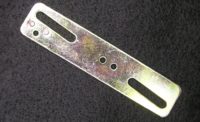USB Type-C, also known as USB-C, is the latest USB connector developed by the USB Implementers Forum (USB-IF). It was designed to gradually replace all previous USB connector types¹, including USB Type A, Type B, Mini and Micro USB. Since 2015, USB Type-C has been widely adapted in a great number of laptops, mobile phones, and storage devices in the consumer electronics market. It allows those devices to transfer data faster while staying in a much smaller form factor.
Recently, the acceptance of Type C for industrial applications, such as machine vision cameras, medical imaging sensors, 3D capturing devices, etc., has been accelerated.
Why USB Type-C is better?
Reversibility: Its unique and friendly symmetric connector design makes USB Type C work regardless of upward or downward facing orientation when you plug it to the USB-C port.
Compactness: USB Type-C connector size is much smaller than the previous USB connector types, such as the USB standard A. With aid of Type C, manufacturers’ dream to shrink their devices to an unprecedented level comes true.
Fast Speed: Supported with the newest USB 3.1 Gen 2 standard, USB Type-C can transfer data up to 10Gbps, which is 20 times faster than USB 2.0 and doubles the speed of USB 3.0.
Continuing using the USB Type-C connector, the newly released USB 3.2 specification³ will support dual channels of USB 3.1 Gen 2 10G data transfer, which will add up the total bandwidth of data throughput to a maximum of 20 Gbps. To utilize this 2x USB 3.1 Gen 2 approach, the interconnection must go through a Type-C to Type-C full feature cable. According to ASMedia, a silicon vendor who is currently developing the USB 3.2 PHY controller, the first USB 3.2 device will hit the market around 20206.
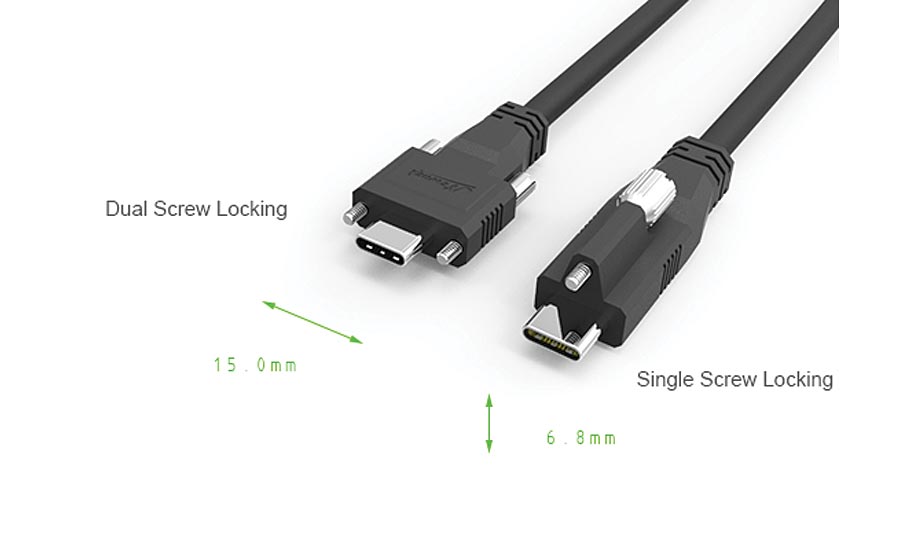
The dual screw USB Type-C plug connector is defined for applications that may have restricted height or that may require the additional securing capability provided by a second locking screw. The single screw USB Type-C plug connector is defined for applications that may have restricted width for the locking screws.
Efficiency: Instead of using the 8b/10b encoding as in USB 3.0/3.1 Gen 1, USB 3.1 Gen 2 uses a more efficient 128b/132b encoding which reduces the encoding overhead. Thus a USB 3.1 Gen 2 Type C cable can support up to 9.7 Gbps in actual data rate which is more than double of a USB 3.0/3.1 Gen 1 cable’s actual speed at around 4Gbps.
Ample Power: USB Type-C can deliver much more power up to 100W at 20V/5A to devices. Compare to the previous USB fixed power profile, USB 2.0 at 5V/0.5A and USB 3.0 at 5V/0.9A respectively, USB Type-C can supply power with various power delivery profiles to many different types of devices such as external storage drives to laptop computers, etc. In the past, for some industrial cameras with high power consumption, they normally need a separate power input. Now with Type C, they can be bus-powered without any external power source.
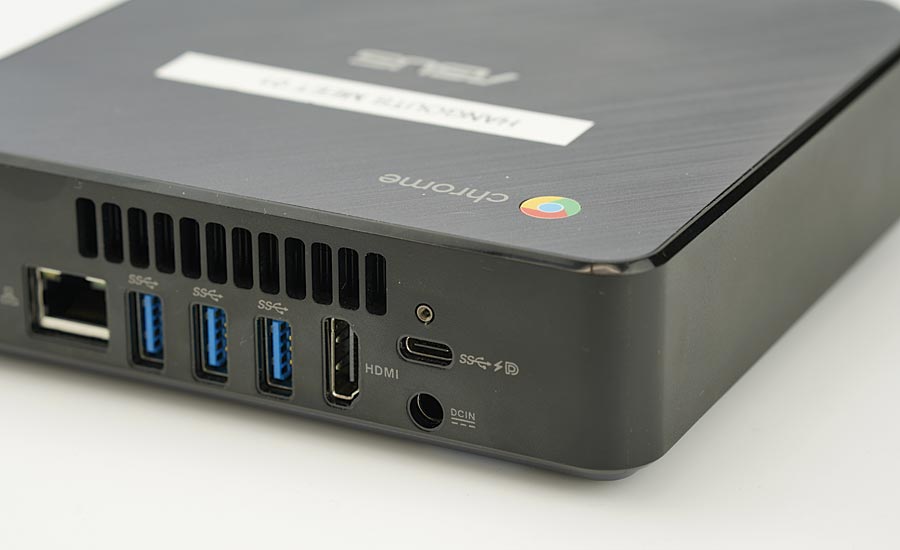
Type C with Single Screw Locking
Type-C Locking Connector
In past years, some industry groups came up with their own USB connectors with locking mechanisms. For example, a machine vision industry group had developed USB3 Vision locking connector standard in order to secure the USB interconnections for machine vision applications5.
However some of these locking connectors are not compatible with each other. Sometimes two locking connectors with similar appearance are not interchangeable due to screw center spacing or thread size, which creates a lot of confusion and misuse among users.
In response to the growing needs for secure interconnections across industries, USB-IF standardizes USB-C locking connectors for the first time in USB history. USB Type-C Locking Connector Specification introduces two types of industrial standard locking mechanisms for the USB Type-C connector to meet needs of different applications.
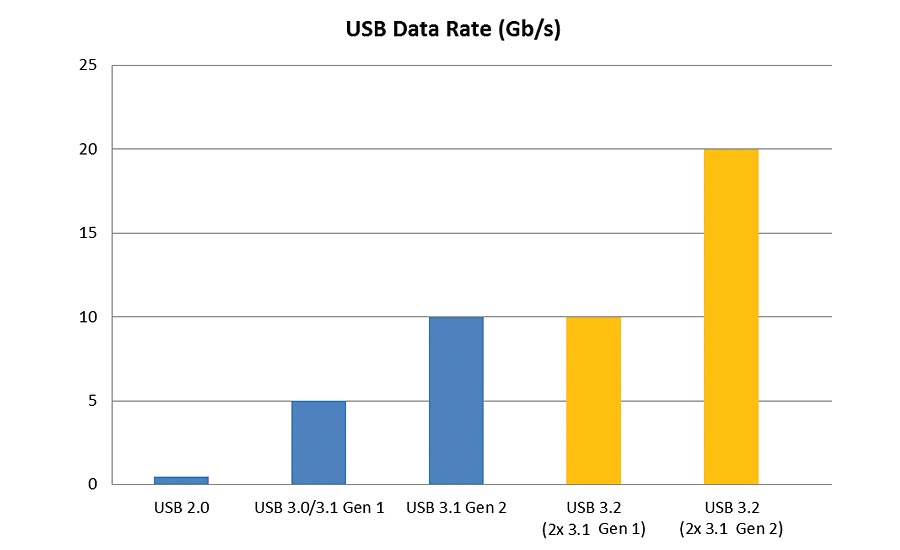
Dual Screw Locking Connector: The dual screw USB Type-C plug connector is defined for applications that may have restricted height or that may require the additional securing capability provided by a second locking screw. The dual screw version can be locked in either plug orientation.
Single Screw Locking Connector: The single screw USB Type-C plug connector is defined for applications that may have restricted width for the locking screws. (Notes: Intel®, RealSense™ is trademark of Intel, Chromebox™ is trademark of Google, ASUS is a trademark of ASUS.)
Several companies have adopted the standard Type C locking connector on their latest USB-C industrial cameras. It’s believed that the USB3 Vision standard committee will incorporate the USB Type-C locking standard to their newly updated version of the USB3 Vision specification very soon.
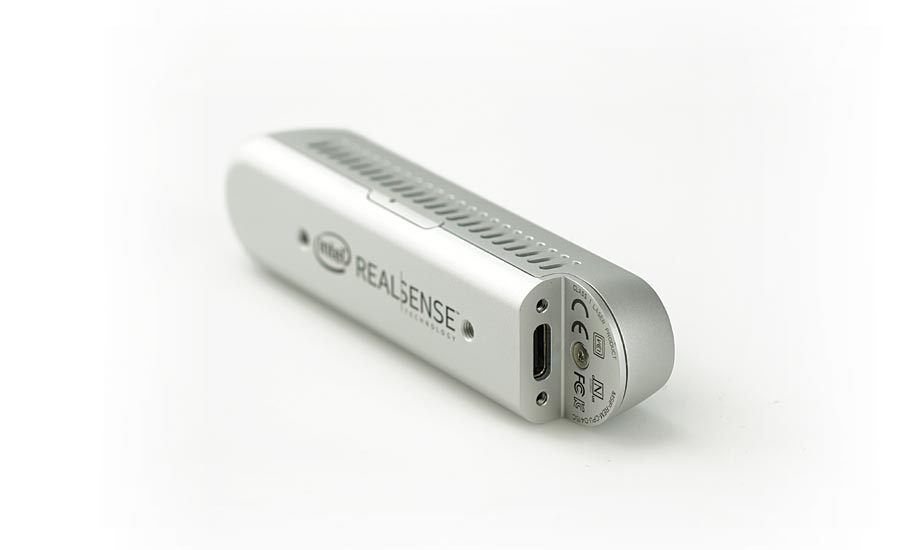
Type C with Dual Screw Locking
Type-C Cable Length Limit
USB Type-C enables a great deal of advanced features for USB connections. However users and integrators are also facing new challenges. For instance, machine vision users’ concern about how to break the length barrier of the Type-C cables. According to Type-C specification, the compliant USB 3.1 Gen 2 C to C full feature cable right now is limited to one meter. Whereas, many current USB 3.0 users are very often using 3m and 5m cable for their applications.
The short length of Type-C cables does impose limitations to the adoption of Type C for industrial applications such as machine vision and professional audio and video applications that require long range connections. Currently, to overcome the length barrier of Type C applications, companies are putting tremendous efforts into developing long range active repeaters or extension cables with Type C features.
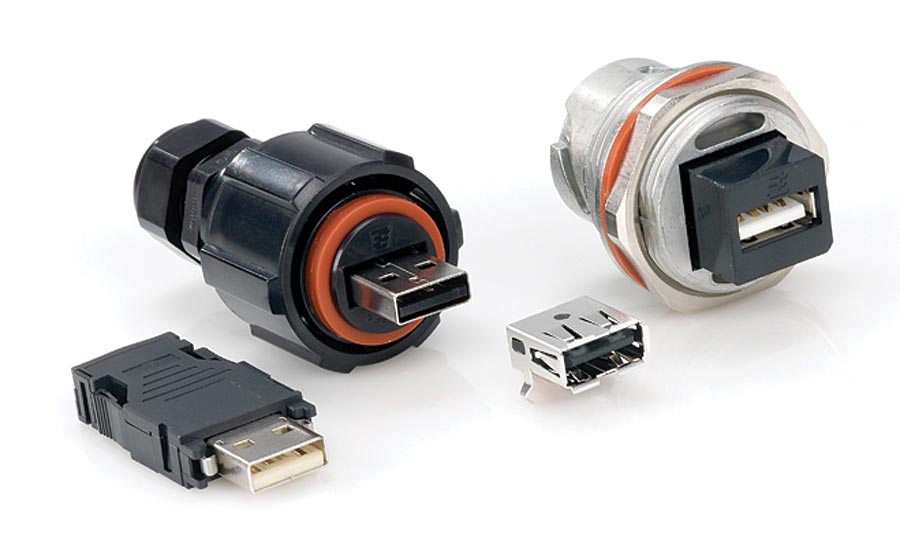
USB locking connectors developed by other industrial groups (Courtesy future Electronics – See Reference 7)
Future of USB Type-C in Machine Vision
With all the advantages brought by USB-C and the emerging USB 3.2 standard, USB Type-C connector will probably turn into the only remaining USB port, though it will still take a few more years for the Type-C to be as popular as the Type-A on the host side. For industrial applications, we will definitely see more and more peripherals such as machine vision cameras to feature the Type-C port. V&S
References
- Universal Serial Bus Type-C Cable and Connector Specification Release 1.3
- Universal Serial Bus Type-C Locking Connector Specification Rev 1.0
- Universal Serial Bus 3.2 Specification Rev 1.0
- USB 3.1 Legacy Cable and Connector Specification Rev 1.0
- USB3 Vision Specification 1.0
- Shilov, Anton. ASMedia Demos USB 3.2 Gen 2x2 PHY, USB 3.2 Controller Due in 2019. Anandtech, 7 June 2018, www.anandtech.com/show/12922/asmedia-demos-usb-32-gen-2x2-phy-usb-32-controller-due-in-2019.
- Futureelectronics. TE Connectivity – TE Connectivity’s Industrial USB Connectors, http://ftm.futureelectronics.com/2017/04/te-connectivity-te-connectivitys-industrial-usb-connectors/

